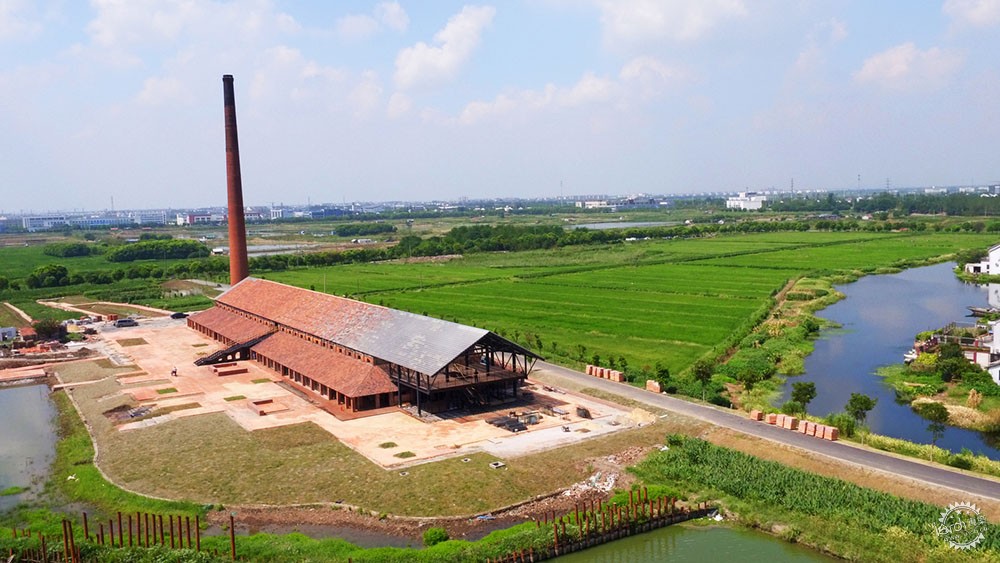
Courtesy of Land-Based Rationalism D-R-C
祝家甸砖窑博物馆/本土设计研究中心
Zhujiadian Brick Kiln Museum / Land-Based Rationalism D-R-C
由专筑网缕夕,李韧编译
来自建筑事务所的描述。位于昆山市南部的锦溪祝家甸村昔日的“陈墓”,是苏州紫金镇紫金砖的产地。小村庄有着令人难忘的历史与传统技艺。祝家甸看起来像长白湖上漂浮着的荷叶,村子东边还有十多个老窑。清代诗人钱思元所云:“窑户如鳞、终岁不绝”。
Text description provided by the architects. Zhujiadian Village in Jinxi, located in South of Kunshan city, was named Chen Grave in old days, which was the place of production of Gold Bricks for Forbidden City with Lu Grave in Suzhou. There is an unforgettable history of the artisans and the bricks in the small village. Zhujiadian looks like a lotus leaf floating on Changbai Lake, and more than ten old kilns on the east of the village. Qian Siyuan, a poet in Qing dynasty, composed “Kilns are a noble scene as a great number of fish scales shining, which always be there years and years.”
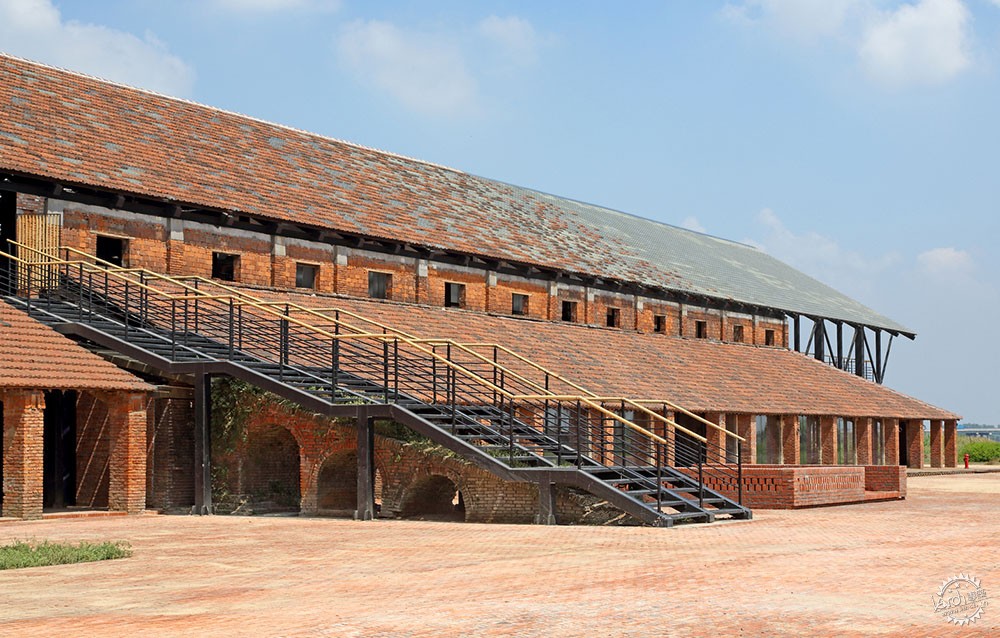
© Guangyuan Zhang
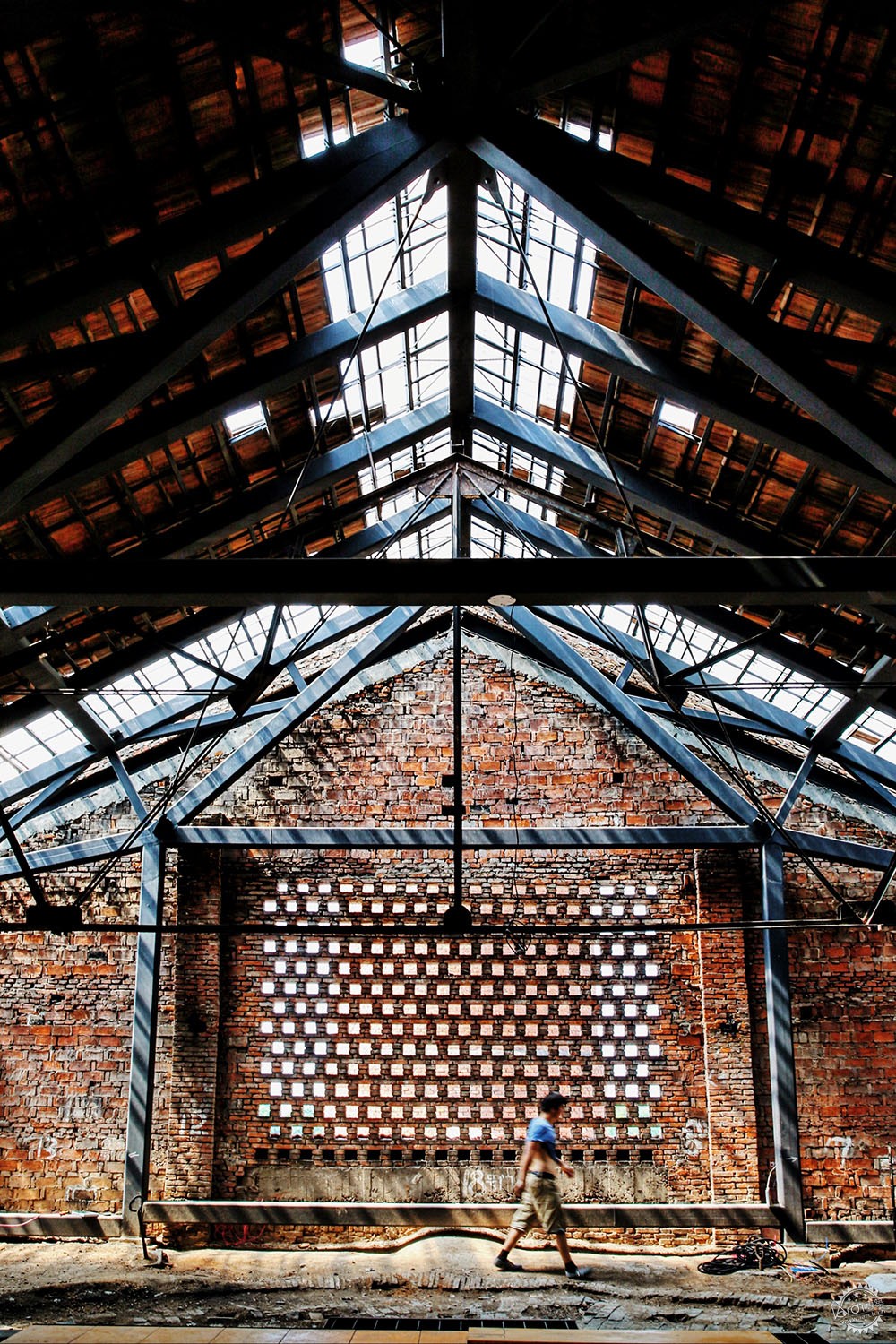
© Yanzhi Jiang
2014年,我们第一次参观村庄。旧窑烟雾缭绕,但是随着传统技术的退化,越来越多的人走出了村庄,来到城市,烧窑技艺逐渐消逝。即使这里距离周庄只有五公里之遥,但整个村庄依旧荒凉,人烟稀少。因此,当地政府要求我们通过设计提高外界对祝家甸村的关注度。
In 2014, we visit the village for the first time. The old kilns were still working with curling smoke. But with the degradation of traditional technology, more and more people went out of the village to find decent jobs while no longer fired kilns. The village became desolate and hardly known by the outside even that the most famous village “Zhou Zhuang” was just five miles away. Therefore, the local government asked us to design how to revive Zhujiadian village.

© Haian Guo
根据现场的情况,中国工程院院士崔愷先生提出了“微观干预”的概念。因此,我们选择村西的一个废弃工厂作为干预点,将它改造为砖博物馆,这样可以吸引这里的人们去了解金砖的历史,然后穿过村庄,人们可以来到另一侧的古窑进行参观,这样建立起来的巡回路径能够为村庄带来一定的经济效益,例如商店、咖啡厅、小旅馆,让村民能够从中获益。
According to the situations, Mr. Cui, who is a member of Chinese Academy of Engineering, suggest a conception about “Micro intervention”, which uses an intervention point to change the whole village. Therefore, we choose an abandoned factory in the west of the village as the intervention point, just a brick museum. So, when the point works, it can attract people here to comprehend the history of Gold Bricks, then, from west to the east, visitors will go to the old kilns on the other side of Zhujiadian. They must pass by the village and opportunities for villagers will occur, such as a shop, a café or a small inn.
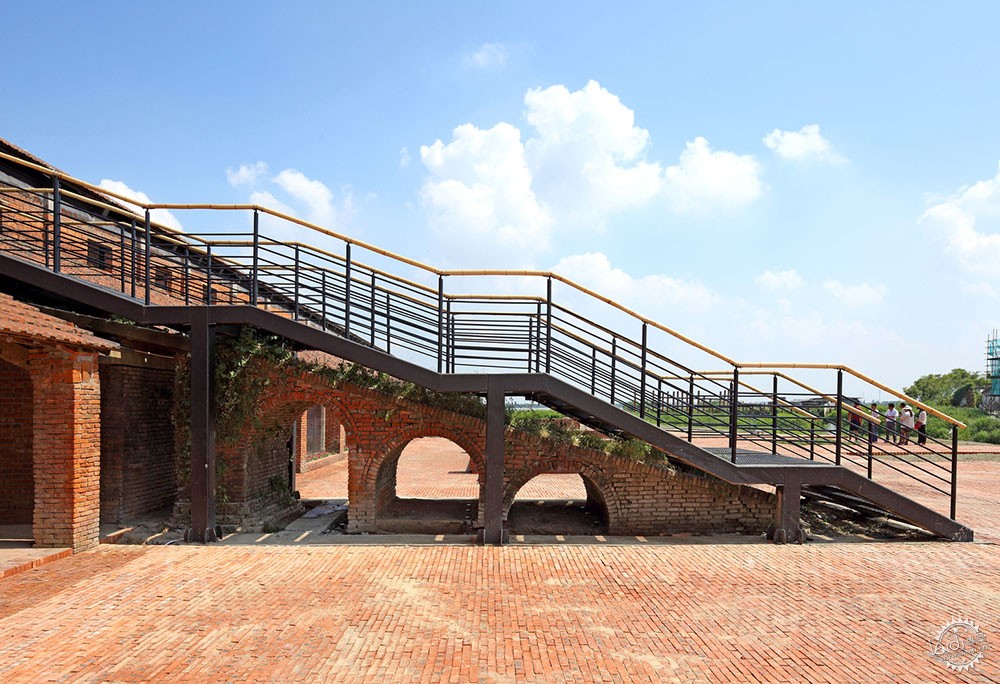
© Guangyuan Zhang

对于建筑的改造,我们提出了“安全核心”的概念,在保留砖厂旧貌的前提下,在工厂的上层放置了3个独立核心来替换旧结构,这是一个令人激动而又大胆的想法。在各个核心之间,我们设置了两个镜面小体量作为辅助空间,其中设置有卫生间及设备用房。
To renovate the factory, we propose an idea about “Safety core”, which can keep the old appearance of the brick factory. We just put 3 cores on the upper floor inside the factory to replace the old structures, which is an exciting and daring idea. Between the cores, two reflected boxes are designed to accommodate restrooms and equipment.
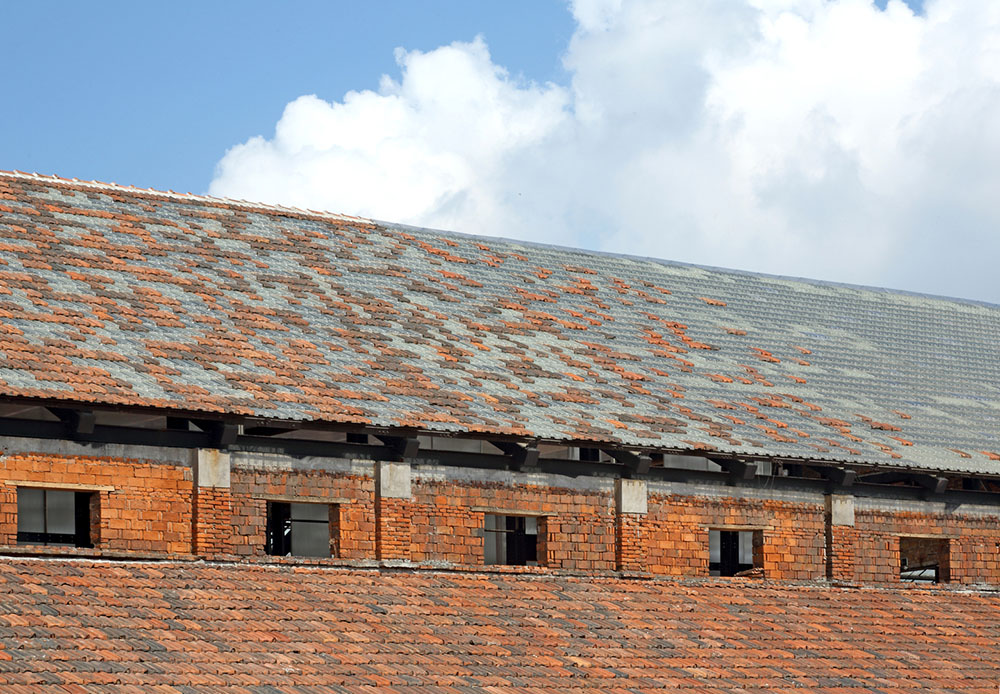
© Guangyuan Zhang

© Haian Guo
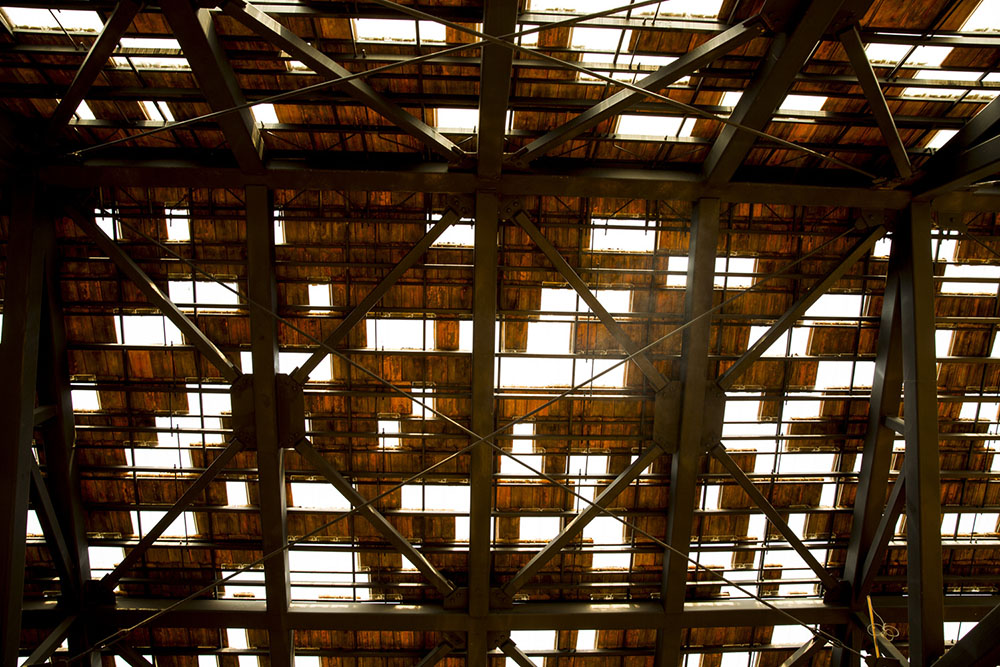
© Yanzhi Jiang
为了减轻屋顶的重量,我们设计了一种独特的透明瓷砖,它们非常轻便。而且,建筑内部空间可以呈现出斑驳的光影效果。
To reduce the weight of roofs, we design a new product named transparent tile, which is very light. Furthermore, the new tiles can simulate the scene when we see the interior variegated space in this building at the first glance.
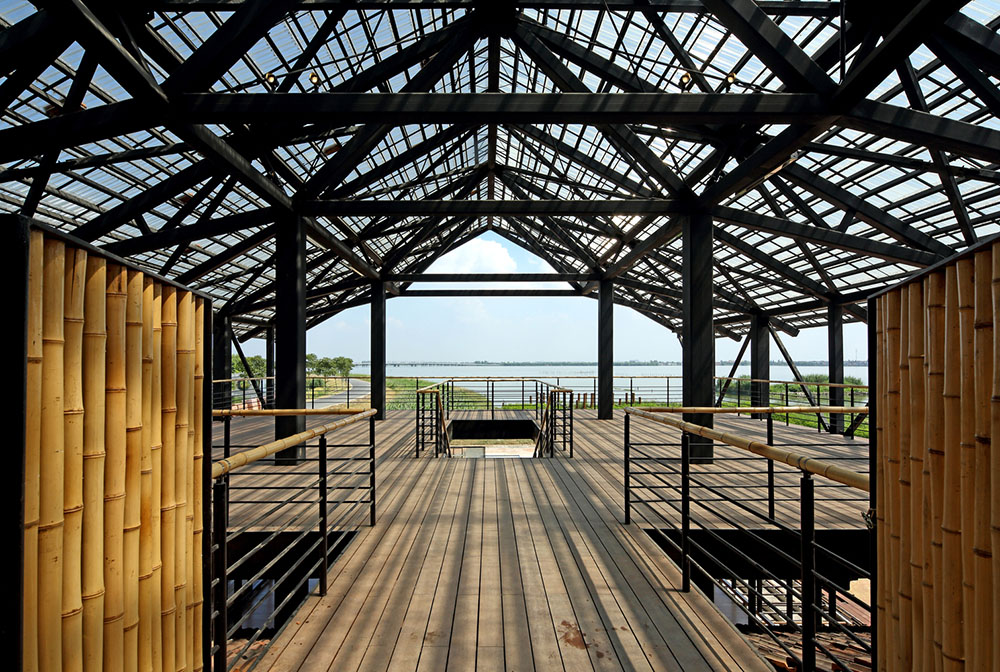
© Guangyuan Zhang
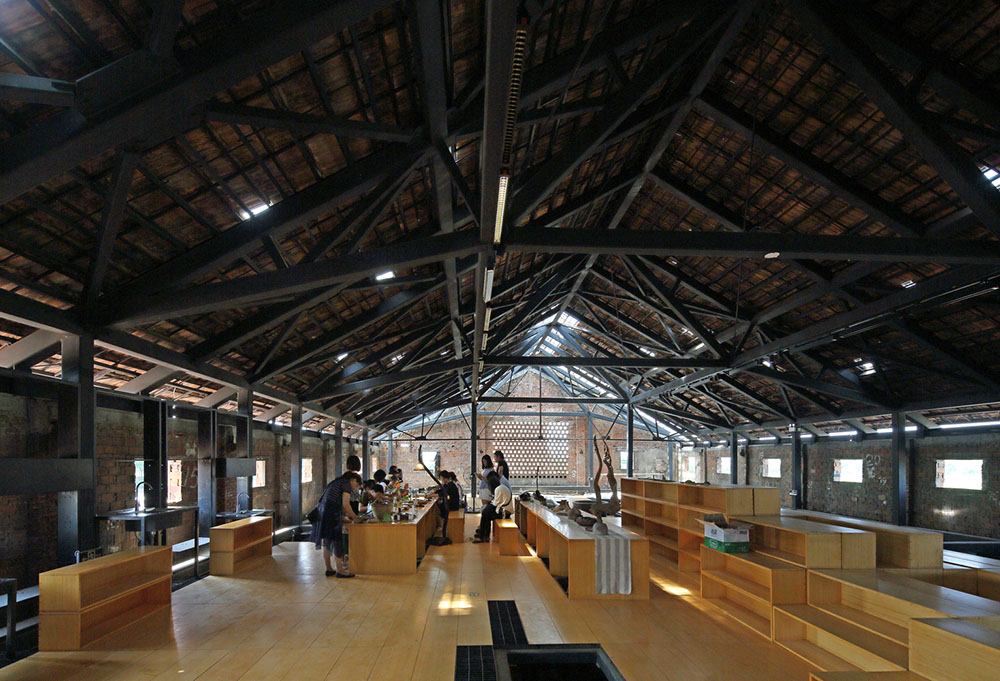
© Guangyuan Zhang
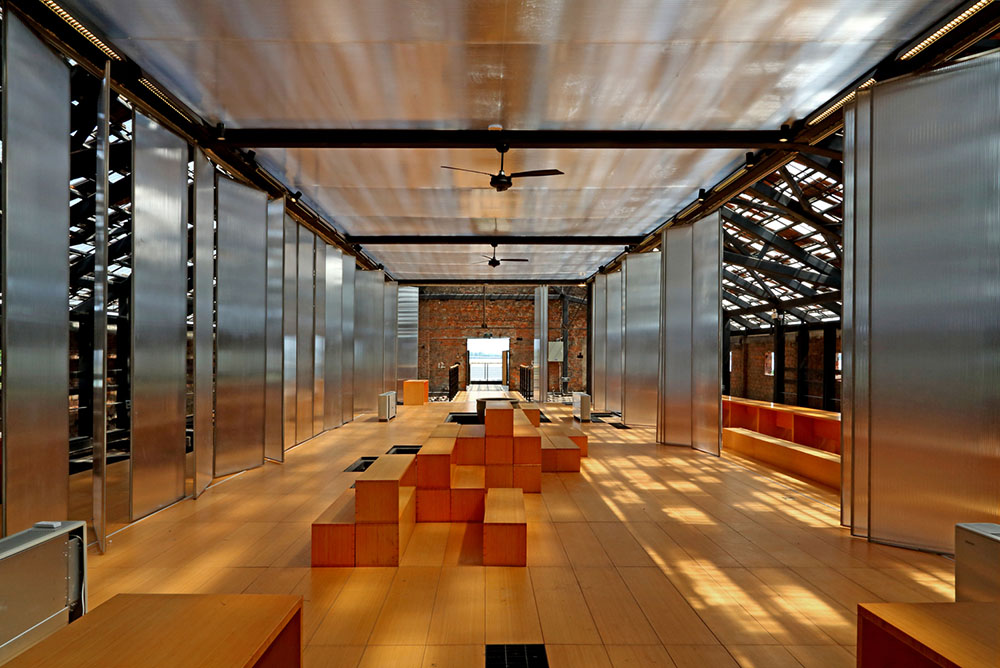
© Guangyuan Zhang

© Guangyuan Zhang
在新大楼内部,我们采用模块设计方法。所有的地板单元、装饰单元、金属单元和设备单元都可以交换使用,这样可以为小型的农村建筑带来不同的类型空间。而现在,根据不同的需求,空间布局时常在变。
Inside the new building, we adopt module design methods. All the floor blocks, furnish blocks, metal blocks and equipment blocks can be exchanged to offer deferent kinds of space in a small rural building. And now, the users change the function almost every month.
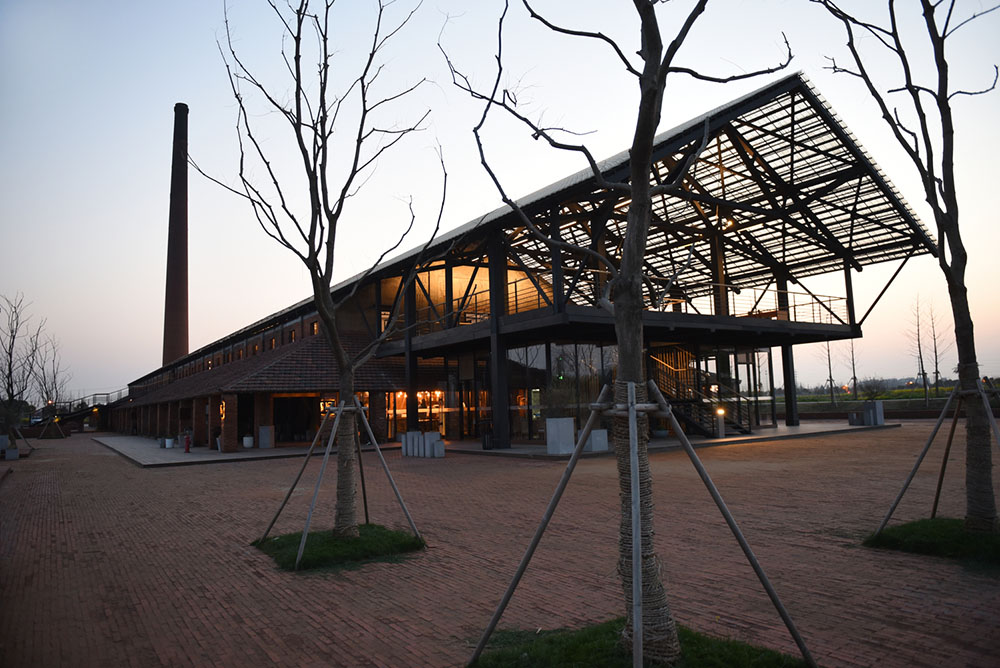
© Haian Guo
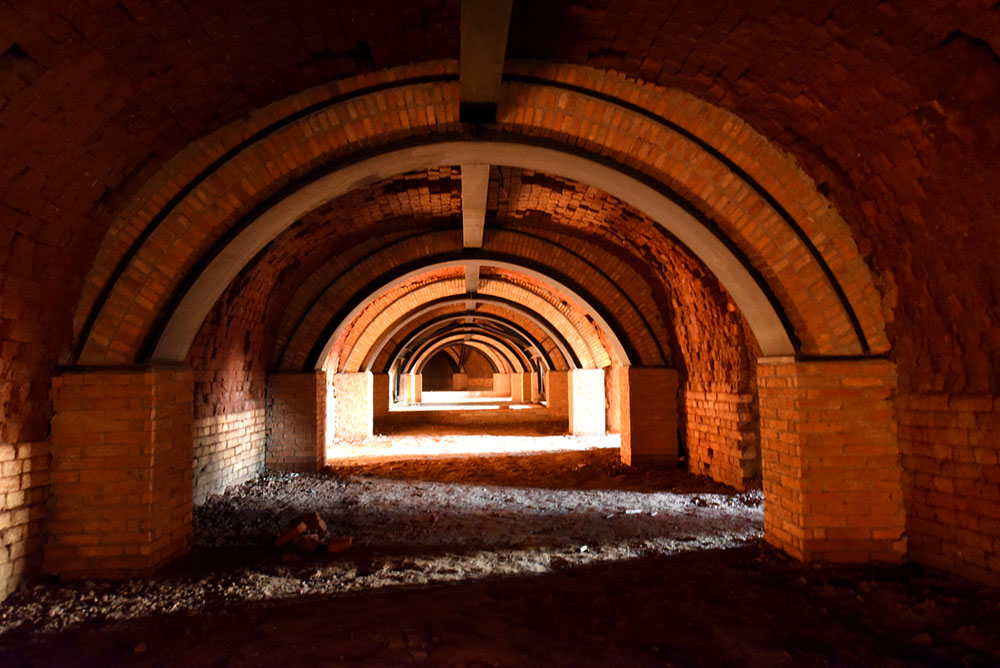
© Haian Guo
正如我们预测的那样,村庄设计持续进行,不久前,业主想要增加工厂的地下功能。他们在窑内底部进行了结构加固,我们用砖拱对这些部分进行装饰,这重现了200多年前的旧窑景观。新砖拱门形成了独特的时空隧道,似乎将我们的记忆带向过往的岁月。
As we predicted, the design is sustainable, soon the owner want to strengthen the lower basement of the factory. They put a lot of steel arches inside the kiln space which were not suitable for the dilapidated building. We covered them with brick arches, which could be seen in the old kilns made in 200 years ago. The new brick arches Integrate a space-time tunnel which can lead us to the old days and the working scenes.
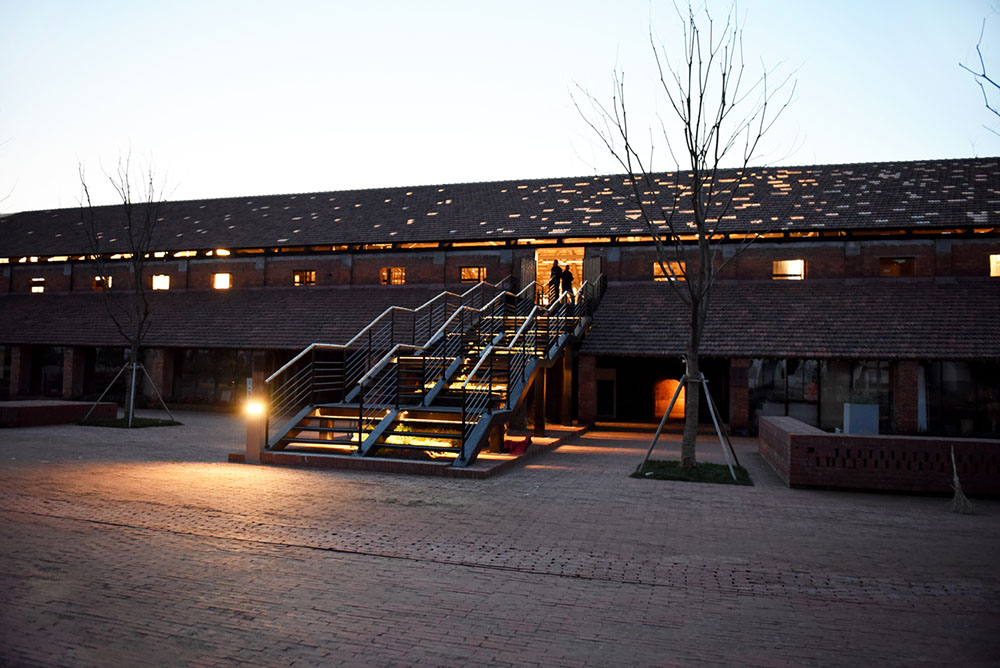
© Haian Guo
为了保留原有的材料运送通道,我们设计了全新的入口钢梯。在楼梯上,游客可以清楚地看到原有斜坡。该项目的最大改造部分是湖边的露台,人们可以欣赏到长白湖的美景,甚至人们还能在古旧的墙体上发现沧桑的字迹——“滇西砖瓦二厂”。
To protect the old descents where workers carried coals and water into the upper floor, we designed new steel stairs with independent basement which did no influence to the old. On the stairs, the old ramps can be seen clearly. The biggest modification to the building is the terrace to the lake where people can enjoy the beautiful scenery of Changbai Lake and you can surprise to find the old words” DIAN XI ZHUAN WA ER CHANG” on the worn wall.
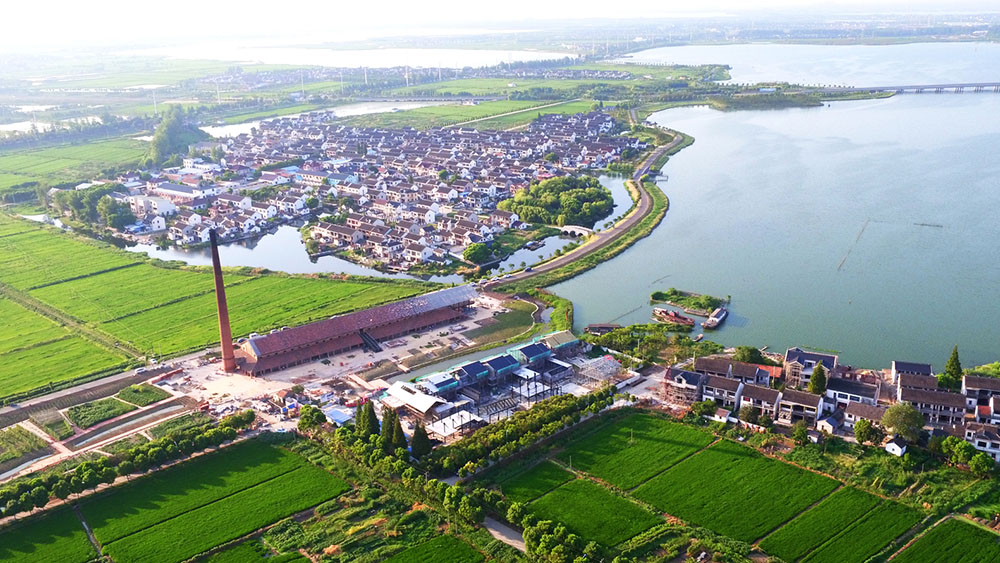
Courtesy of Land-Based Rationalism D-R-C

© Haian Guo
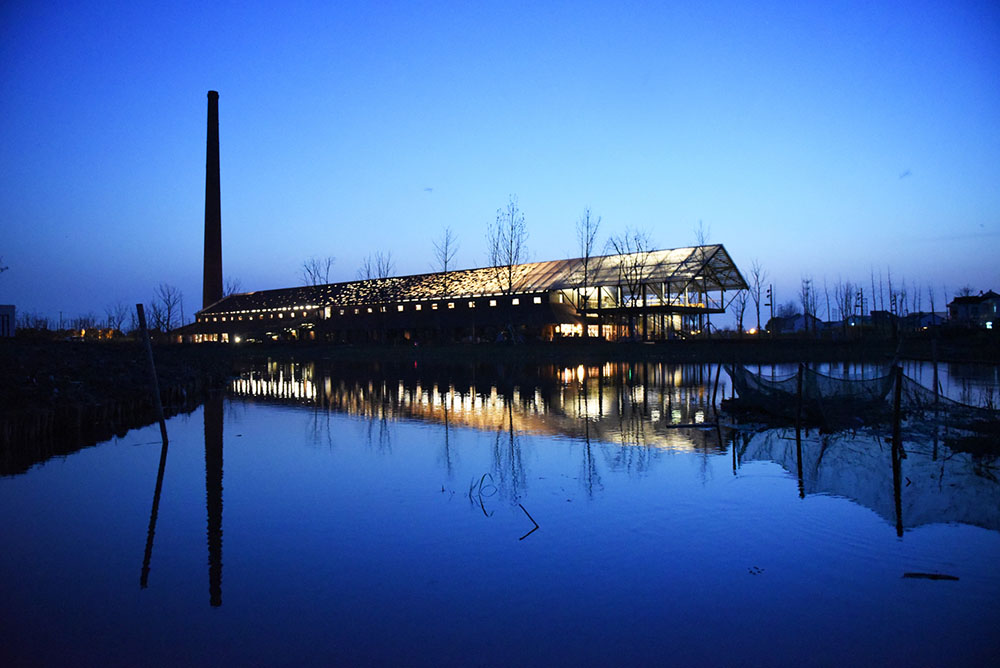
© Haian Guo
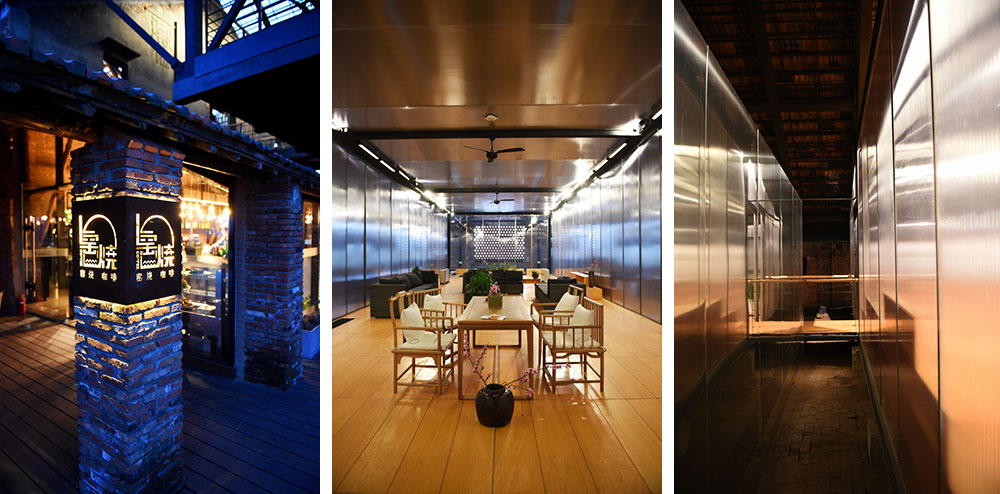
© Haian Guo

© Haian Guo

© Haian Guo
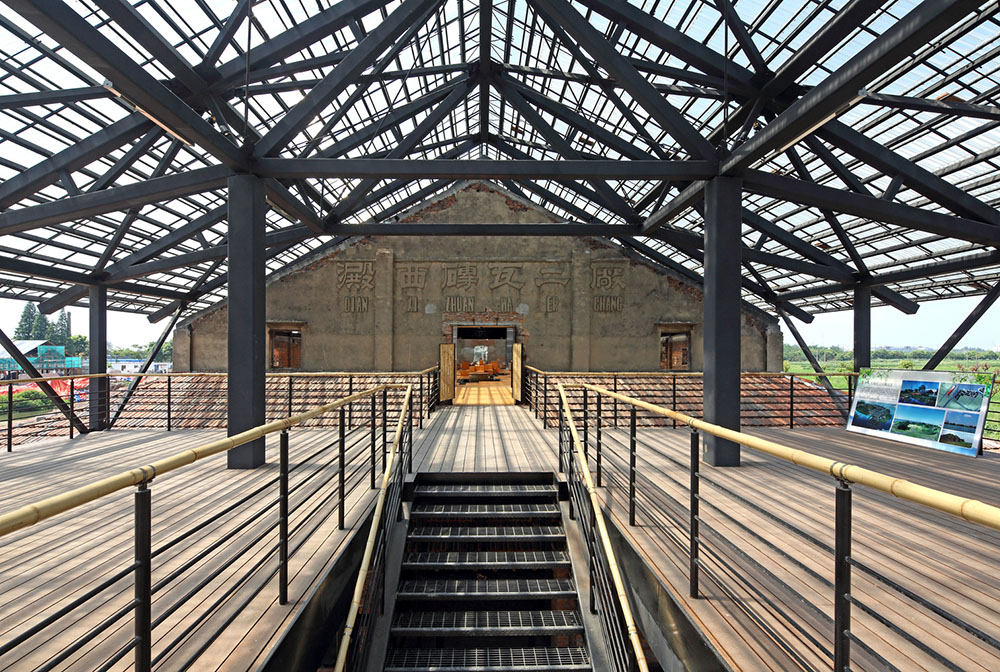
© Guangyuan Zhang
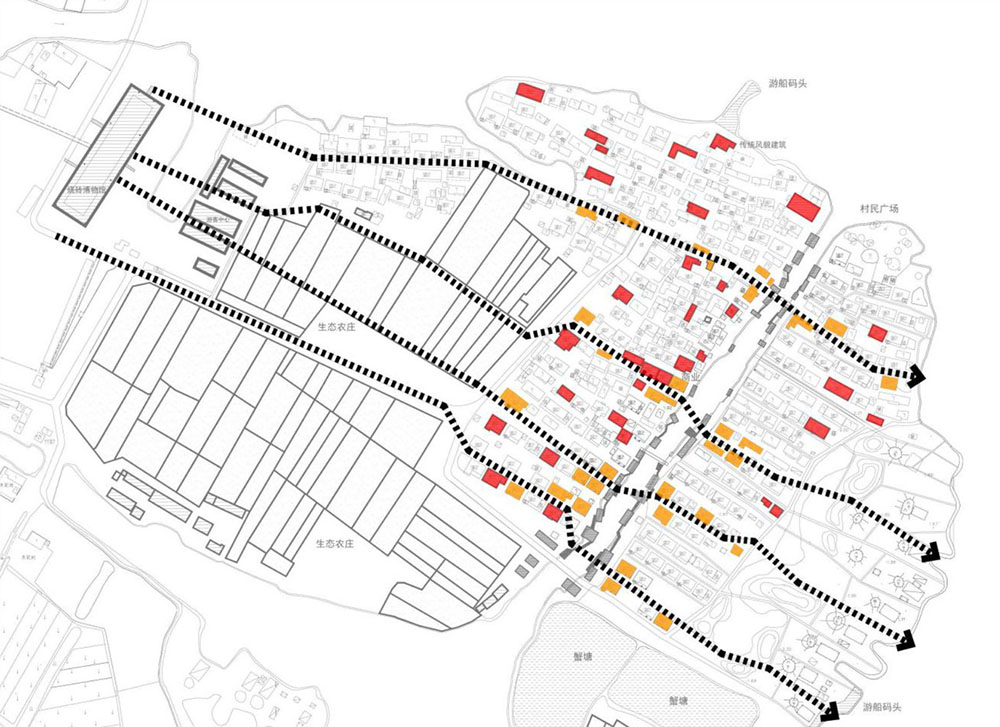
图解/Diagram. Image Courtesy of Land-Based Rationalism D-R-C

图解/Diagram. Image Courtesy of Land-Based Rationalism D-R-C

剖面图/Section
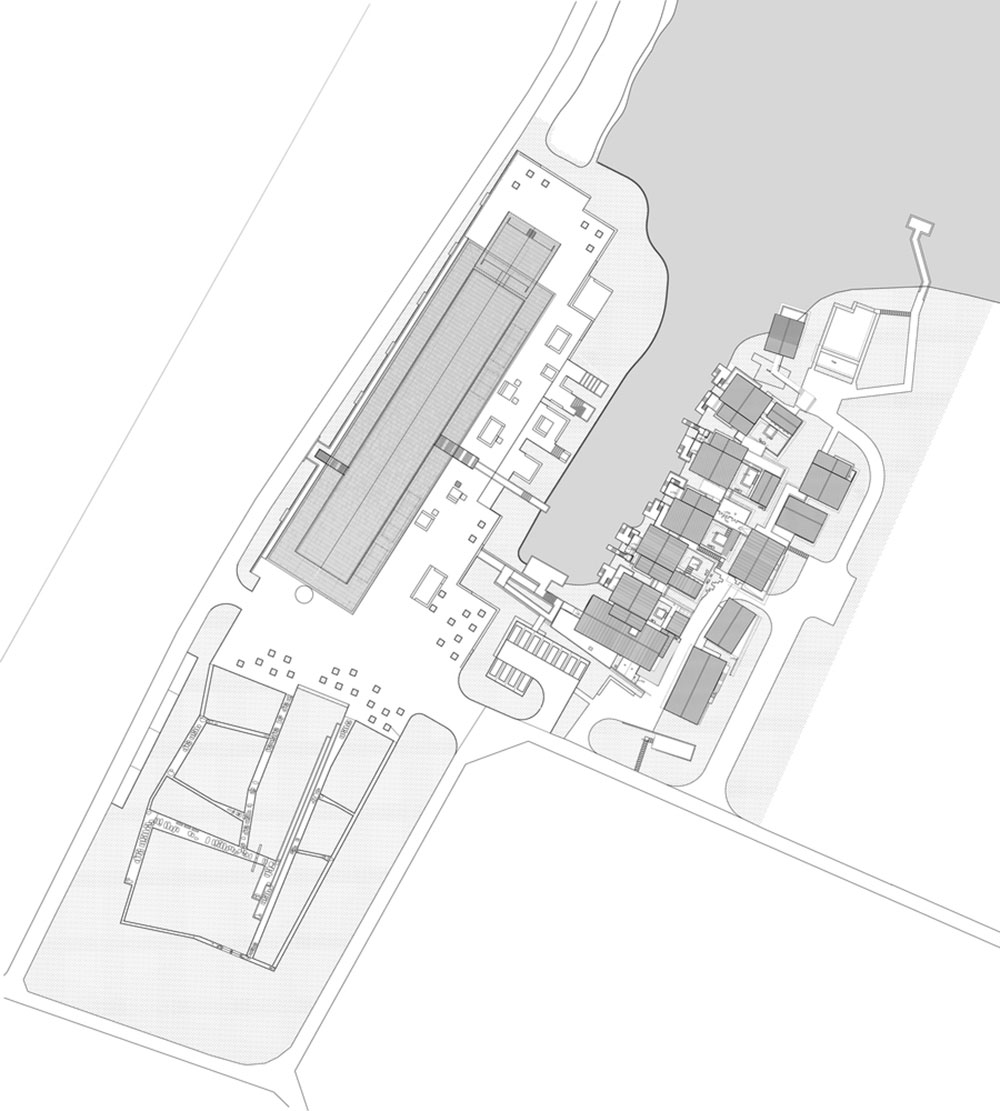
场地平面图/Site Plan
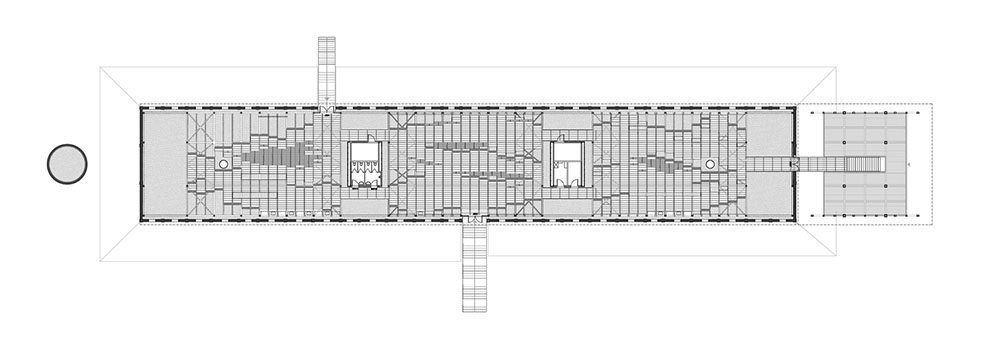
底层平面图/Ground Plan
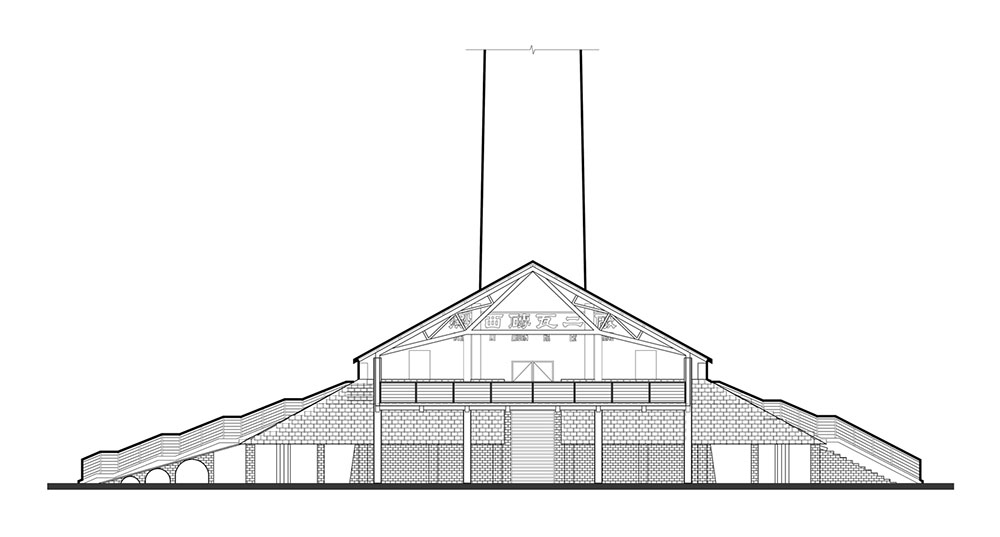
北里面 /North Elevation
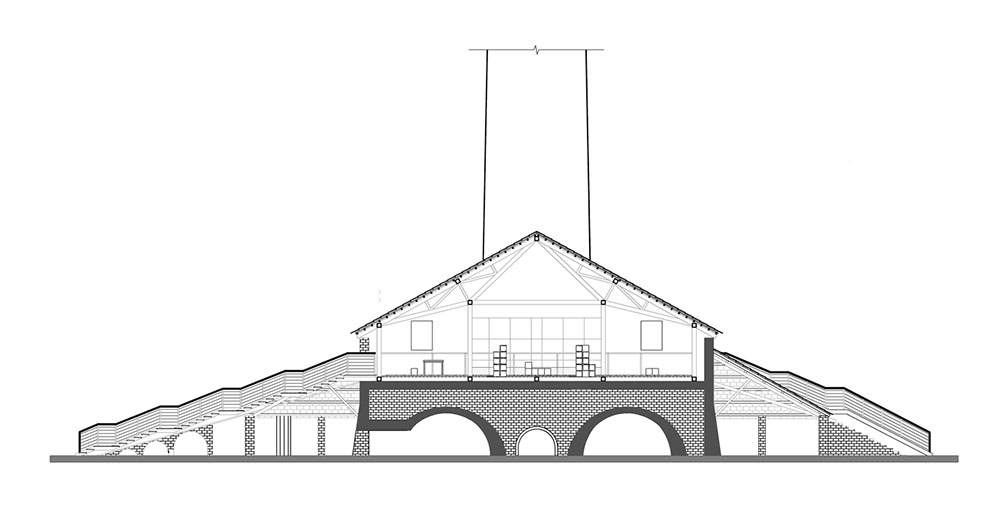
剖面图/Section

东立面/East Elevation

剖面图/Section
建筑事务所:本土设计研究中心
项目位置:中国,江苏,昆山
设计团队: 崔愷、郭海鞍、张笛、沈一婷
建筑面积:1650平方米
项目年份:2016年
摄影:张广源,郭海鞍,江言志
结构设计:陈文元,CADG
景观设计:View Unlimited, Landscape Architecture studio, CUCD
照明设计:北京宁之境照明设计有限公司
施工单位:昆山市建设投资开发集团有限公司
运营单位:伊犁乡同文化旅游开发有限公司
文案:郭海鞍
Architects: Land-Based Rationalism D-R-C
Location: Kunshan, Jiangsu, China
Design Team: Kai Cui, Haian Guo, Di Zhang, Yiting Shen
Area: 1650.0 m2
Project Year: 2016
Photographs: Guangyuan Zhang, Haian Guo, Yanzhi Jiang
Structure Design: Wenyuan Chen, CADG
Landscape Design: View Unlimited, Landscape Architecture studio, CUCD
Lighting design: Beijing Ning Field Lighting Design Corp., Ltd.
Construction: Kunshan City Construction Investment Development Group Co., Ltd.
Operation: Ili Township with Culture and Tourism Development Co., Ltd.
Text: Haian Guo
出处:本文译自www.archdaily.com/,转载请注明出处。
|
|
